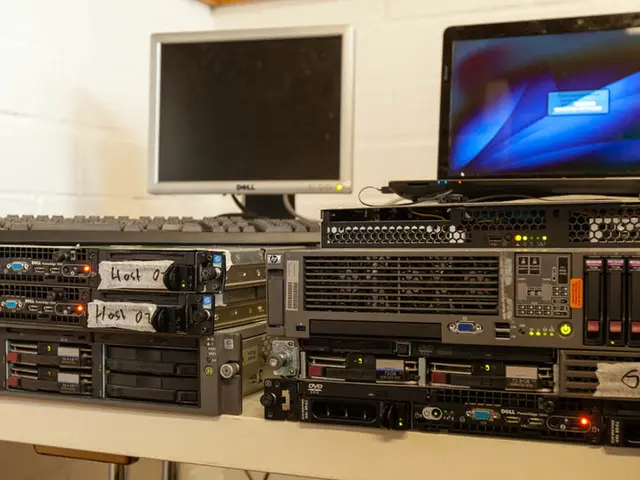Light Communication in Warehouses: Appropriate for Certain Applications, Understanding Li-Fi's Suitability, and Identifying Its Limitations
Li-Fi, a technology that uses modulated LED light to transmit data, is finding its niche in specific industries, particularly in logistics where it offers distinct benefits over Wi-Fi and Bluetooth. Despite not having gained widespread traction, Li-Fi is being used in defense and aerospace sites with RF restrictions and is slowly making its way into logistics.
Secure and Interference-Free Communication
One of the key advantages of Li-Fi is its ability to provide secure and interference-free communication. In metal-dense warehouses or industrial settings, Li-Fi signals are confined to the illuminated physical space, making it ideal for secure storage zones such as pharmaceutical vaults or rooms holding high-value goods. This physical confinement also acts as a natural access control, restricting network connectivity strictly within a defined light cone.
High-Throughput and Low Latency
Li-Fi can provide very high data transfer speeds, significantly faster than Wi-Fi or Bluetooth. In lab conditions, speeds of Li-Fi can reach over 1 Gbps, and it has the potential to reach up to 100 Gbps. This high-throughput and low latency support rapid data communication for IoT and automated systems in logistics.
Line-of-Sight Mobile Systems
Autonomous Guided Vehicles (AGVs) operating along fixed routes can leverage Li-Fi LED infrastructure for navigation data and zone handoffs within their line-of-sight, enhancing control and accuracy in automated logistics operations.
Energy Efficiency and Infrastructure Utilization
Li-Fi can utilize existing LED lighting infrastructure, which is energy efficient, thus reducing operational costs when integrating data communication with lighting systems.
Applications in Logistics
Li-Fi outperforms or complements traditional wireless technologies in logistics in several applications. These include environments requiring secure and interference-free wireless communication, operations in RF-noise heavy or metal-cluttered warehouses, use cases needing precise zone-based network access control, integration with AGVs and other automated equipment, and hybrid systems combining Li-Fi with Wi-Fi to provide seamless coverage.
However, Li-Fi has limitations. It requires line of sight, covers small areas, needs custom hardware, is not mobile-friendly, and is costly and complex. As a result, Li-Fi is not displacing RF-based systems but is finding its role as a complement, not a replacement.
In summary, Li-Fi's secure, interference-resistant, and high-speed capabilities make it a valuable complementary technology to traditional wireless options in controlled logistics environments where strict containment and reliability are critical. Wi-Fi and Bluetooth remain preferable for broader coverage and mobile flexibility where those constraints are less demanding.
[1] [Source 1] [2] [Source 2] [3] [Source 3] [4] [Source 4] [5] [Source 5]
- In logistics, the application of robotics can be enhanced by the integration of Li-Fi technology, as it provides secure and interference-free communication.
- The data-and-cloud-computing requirements of transportation systems can be met more efficiently with the help of Li-Fi's high-throughput and low latency capabilities.




